Darcy Barron, physics, University of New Mexico – Enabling Discoveries in Fundamental Physics by Maximizing the Sensitivity of Cosmic Microwave Background Polarization Surveys from Chile
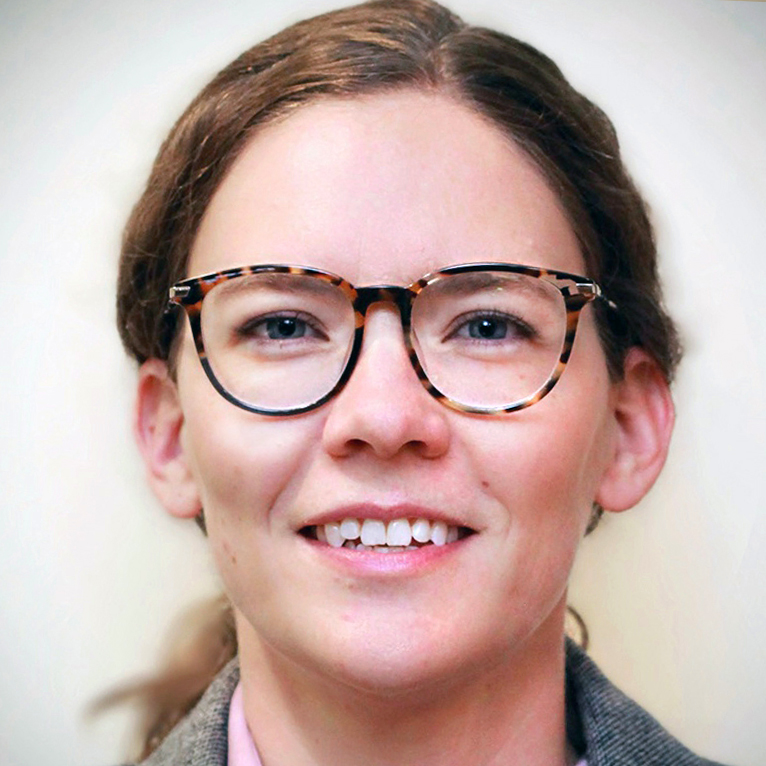 “My research focuses on studying our universe through measurements of the polarization of the cosmic microwave background (CMB). In the past two decades, three generations of ground-based CMB polarization telescopes have made successive leaps in sensitivity, which led to the detection of the faint B-mode polarization of the CMB from gravitational lensing. Now, we are in the midst of building and designing the next two generations of instruments, using a combination of proven techniques and new technologies to dramatically expand the sensitivity and coverage of these CMB surveys. Our ultimate goal is characterizing microwave polarization over the majority of the sky, with excellent sensitivity at small and large angular scales. This goal is motivated by outstanding questions in cosmology and particle physics, including seeking evidence of inflation and signatures of new particles and new physics. As we build up these deep maps over years of surveying the sky, we will also create a rich dataset with a new view of the transient microwave universe, with potential for new discoveries in astronomy and astrophysics. My education plan will work to better support physics and astronomy undergraduate students at UNM in their first few semesters, with the goal of improving retention rates and diversity. The path to upper-level physics and astronomy courses can be challenging and isolating, especially for students who start off-sequence or transfer in. By developing workshops and seminars open to all physics students, with content on careers in physics and research skills, we hope to augment the physics curriculum and help students build stronger networks within the department.”
“My research focuses on studying our universe through measurements of the polarization of the cosmic microwave background (CMB). In the past two decades, three generations of ground-based CMB polarization telescopes have made successive leaps in sensitivity, which led to the detection of the faint B-mode polarization of the CMB from gravitational lensing. Now, we are in the midst of building and designing the next two generations of instruments, using a combination of proven techniques and new technologies to dramatically expand the sensitivity and coverage of these CMB surveys. Our ultimate goal is characterizing microwave polarization over the majority of the sky, with excellent sensitivity at small and large angular scales. This goal is motivated by outstanding questions in cosmology and particle physics, including seeking evidence of inflation and signatures of new particles and new physics. As we build up these deep maps over years of surveying the sky, we will also create a rich dataset with a new view of the transient microwave universe, with potential for new discoveries in astronomy and astrophysics. My education plan will work to better support physics and astronomy undergraduate students at UNM in their first few semesters, with the goal of improving retention rates and diversity. The path to upper-level physics and astronomy courses can be challenging and isolating, especially for students who start off-sequence or transfer in. By developing workshops and seminars open to all physics students, with content on careers in physics and research skills, we hope to augment the physics curriculum and help students build stronger networks within the department.”
Carl Brozek, chemistry, University of Oregon – Clean Water from Porous Nanocrystals: An Undergraduate Training Program in Soft Skills and Sustainable Materials
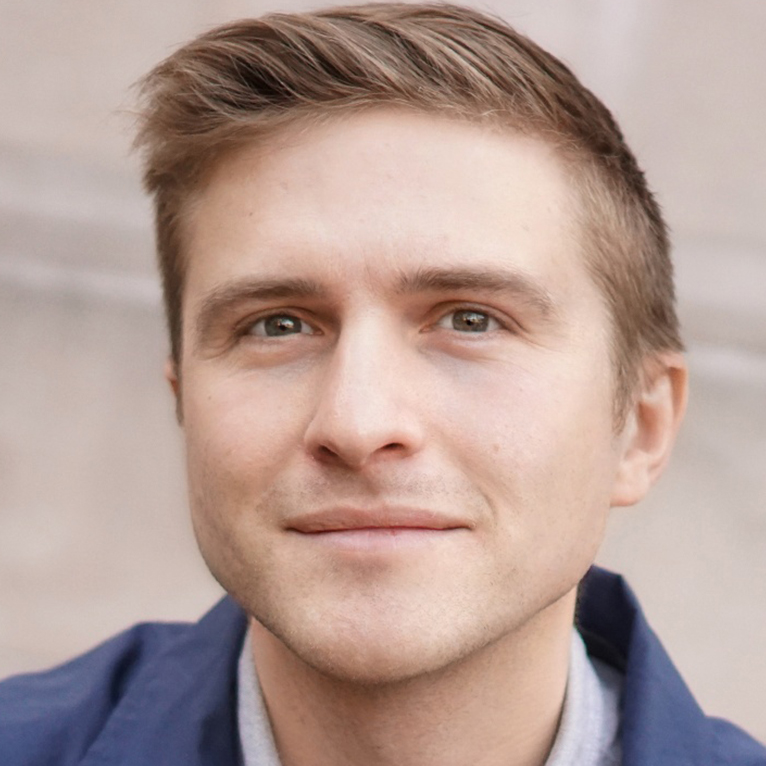 “The Brozek group will investigate water purification membranes that simultaneously accomplish the goals normally meant for many separate water filtration steps – toxin degradation and ion capture of contaminants at sizes ranging from centimeters to sub-nanometers. Because our membranes incorporate nanoparticles with the highest known surfaces of any material and with diverse compositions that can be tuned by molecular chemistry, they stand to achieve greater selectivity and efficiencies than current water purification materials while providing insight into fundamental chemistry of a new class of nanomaterial. Education plan: College students aspiring for careers in science need many skills typically found outside the classroom, such as science communication writing, software familiarity, graphic design, and resume building, to name a few. We will build a collection of workshop training programs to help undergraduates learn many of the "soft skills" needed to be leaders at the next stages of their careers in academia, education, industry and beyond.”
“The Brozek group will investigate water purification membranes that simultaneously accomplish the goals normally meant for many separate water filtration steps – toxin degradation and ion capture of contaminants at sizes ranging from centimeters to sub-nanometers. Because our membranes incorporate nanoparticles with the highest known surfaces of any material and with diverse compositions that can be tuned by molecular chemistry, they stand to achieve greater selectivity and efficiencies than current water purification materials while providing insight into fundamental chemistry of a new class of nanomaterial. Education plan: College students aspiring for careers in science need many skills typically found outside the classroom, such as science communication writing, software familiarity, graphic design, and resume building, to name a few. We will build a collection of workshop training programs to help undergraduates learn many of the "soft skills" needed to be leaders at the next stages of their careers in academia, education, industry and beyond.”
Ilse Cleeves, astronomy, University of Virginia – Identifying Molecular Patterns that Reveal the Chemistry of Planet Formation
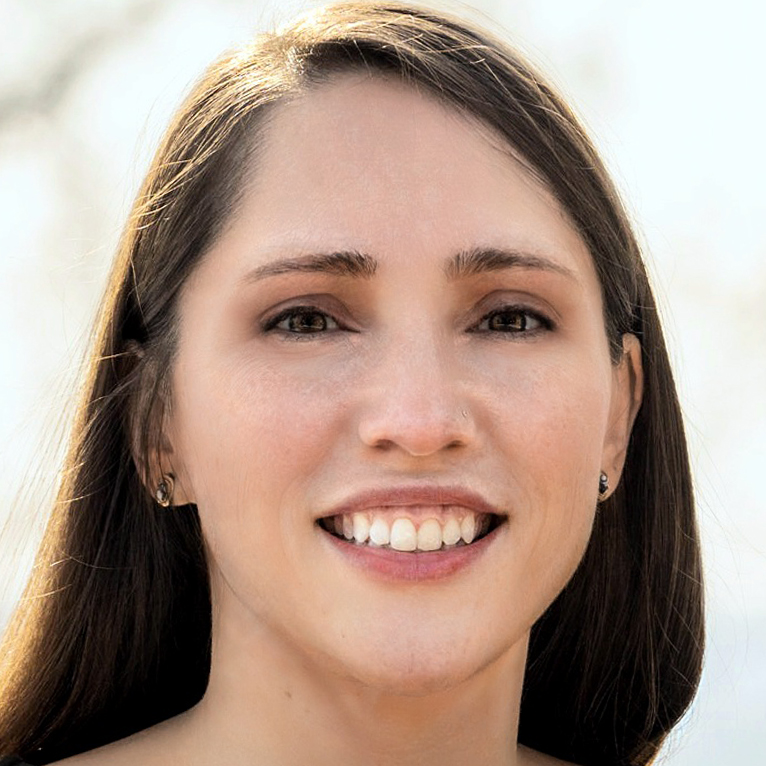 “Planets come in a diversity of sizes, orbits, and compositions, and exist around stars both similar to and different from our Sun. This diversity originates in planet-forming disks encircling young stars. Using a combination of simulations and telescope observations, our research aims to better understand the physical and chemical properties of disks and how these properties influence the formation of planets, and importantly, habitable planets like the Earth. Understanding our solar system's origins (and the origins of planets more broadly) is an active area of research, and in tandem with our group's proposed efforts, we will establish a first-year undergraduate research and mentoring pilot program for URM students. The emphasis of this pilot will be to “demystify” STEM paths through a combination of guidance on courses, career paths, and research projects that are designed to provide skill-based training such as coding and scientific writing.”
“Planets come in a diversity of sizes, orbits, and compositions, and exist around stars both similar to and different from our Sun. This diversity originates in planet-forming disks encircling young stars. Using a combination of simulations and telescope observations, our research aims to better understand the physical and chemical properties of disks and how these properties influence the formation of planets, and importantly, habitable planets like the Earth. Understanding our solar system's origins (and the origins of planets more broadly) is an active area of research, and in tandem with our group's proposed efforts, we will establish a first-year undergraduate research and mentoring pilot program for URM students. The emphasis of this pilot will be to “demystify” STEM paths through a combination of guidance on courses, career paths, and research projects that are designed to provide skill-based training such as coding and scientific writing.”
Scott Cushing, chemistry, California Institute of Technology – The Role of Picosecond Correlations in Solid-State Electrolytes for Batteries
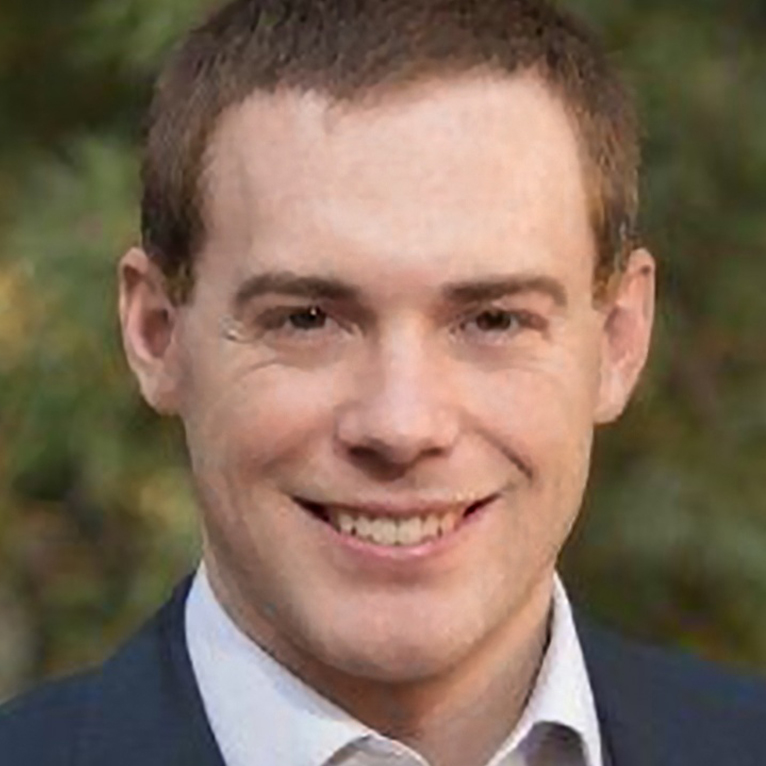 “Solid-state batteries are staged to rapidly take over the market because of their high energy density and non-flammable operation. A special class of solid-state electrolytes, termed superionic conductors, can even conduct ions faster than a liquid electrolyte despite the increased interactions between the ion and the lattice channels of the solid. My research focuses on building a spectrometer that can measure on picosecond timescales how ion, electron and lattice vibration interactions lead to ultrafast ion hopping, ultimately guiding new material synthesis. In addition to the scientific component, an outreach program is designed to match Caltech graduate students with undergraduates at minority serving institutions around the Los Angeles area. As opposed to intensive summer programs, this effort aims to create year-round, informal mentor networks to both help disadvantaged students explore science careers and give them the skills needed to get there.”
“Solid-state batteries are staged to rapidly take over the market because of their high energy density and non-flammable operation. A special class of solid-state electrolytes, termed superionic conductors, can even conduct ions faster than a liquid electrolyte despite the increased interactions between the ion and the lattice channels of the solid. My research focuses on building a spectrometer that can measure on picosecond timescales how ion, electron and lattice vibration interactions lead to ultrafast ion hopping, ultimately guiding new material synthesis. In addition to the scientific component, an outreach program is designed to match Caltech graduate students with undergraduates at minority serving institutions around the Los Angeles area. As opposed to intensive summer programs, this effort aims to create year-round, informal mentor networks to both help disadvantaged students explore science careers and give them the skills needed to get there.”
Ryan Davis, chemistry, Trinity University – Chemistry Beyond the Beaker: Exploring Supramolecular Assembly in Aqueous Microdroplets and Addressing Inequities in Chemical Education
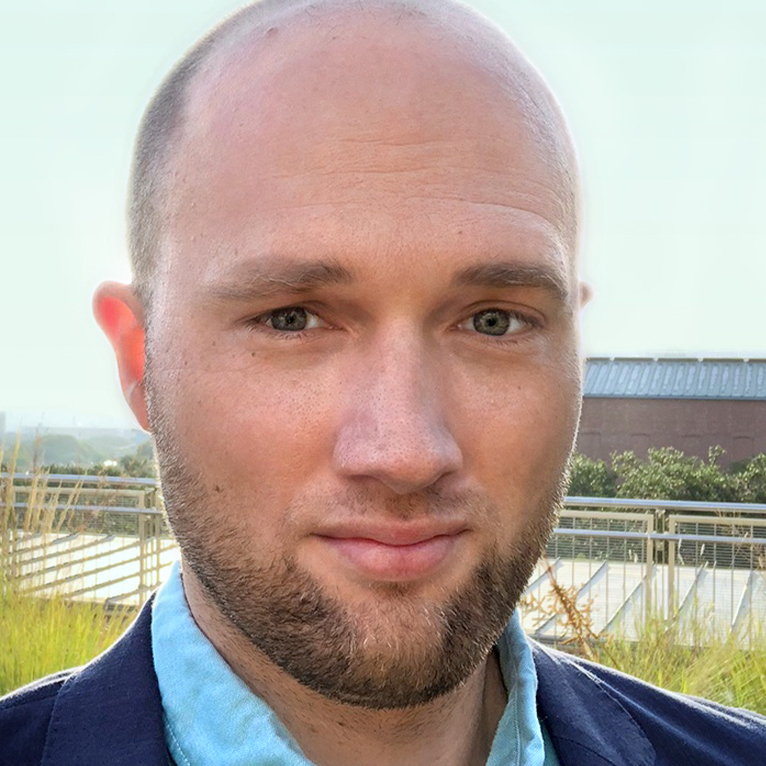 “Aerosol particles – tiny particles of solid or liquid suspended in a gas – may be small, but they have a large impact on our daily lives. They influence climate, air quality, and disease transmission. They’re also used extensively in industrial applications and, due to their unique properties, are promising tools for chemical and materials synthesis. Many properties of aerosol particles cannot be readily predicted from bulk measurements, which limits our understanding of these important micro-compartments. In this proposal, levitation-based techniques will be used to advance fundamental understanding of aerosol properties. The proposed work will study the effect of supramolecular assembly in aerosolized microdroplets under conditions not accessible with bulk “beaker” chemistry. The focus of this work is on aqueous mixtures of inorganic ions and biomolecules, where water content of the microdroplets is regulated by the relative humidity (RH) that the droplet is exposed to in the levitation chamber. At intermediate to low RH, droplet-phase water content is low and solute concentrations are high, which can enable supramolecular interactions not readily observed in bulk solution. Here, the physico-chemical effect of those novel supramolecular interactions will be characterized, and a predictive model will be developed. This work aims to improve understanding of the factors influencing disease transmission and climate, and to develop a predictive understanding of the physical properties of aerosol particles. In the classroom, an asset- and design-based general chemistry laboratory will be developed that seeks to enhance equity and student self-efficacy in introductory chemistry courses. Additionally, a multi-institution, collaborative, course-based research experience (Co-CURE) will provide advanced undergraduates with networking and team science opportunities through virtual collaborations.”
“Aerosol particles – tiny particles of solid or liquid suspended in a gas – may be small, but they have a large impact on our daily lives. They influence climate, air quality, and disease transmission. They’re also used extensively in industrial applications and, due to their unique properties, are promising tools for chemical and materials synthesis. Many properties of aerosol particles cannot be readily predicted from bulk measurements, which limits our understanding of these important micro-compartments. In this proposal, levitation-based techniques will be used to advance fundamental understanding of aerosol properties. The proposed work will study the effect of supramolecular assembly in aerosolized microdroplets under conditions not accessible with bulk “beaker” chemistry. The focus of this work is on aqueous mixtures of inorganic ions and biomolecules, where water content of the microdroplets is regulated by the relative humidity (RH) that the droplet is exposed to in the levitation chamber. At intermediate to low RH, droplet-phase water content is low and solute concentrations are high, which can enable supramolecular interactions not readily observed in bulk solution. Here, the physico-chemical effect of those novel supramolecular interactions will be characterized, and a predictive model will be developed. This work aims to improve understanding of the factors influencing disease transmission and climate, and to develop a predictive understanding of the physical properties of aerosol particles. In the classroom, an asset- and design-based general chemistry laboratory will be developed that seeks to enhance equity and student self-efficacy in introductory chemistry courses. Additionally, a multi-institution, collaborative, course-based research experience (Co-CURE) will provide advanced undergraduates with networking and team science opportunities through virtual collaborations.”
Serena Eley, physics, Colorado School of Mines – Identifying the Microscopic Origins of Energy Loss Mechanisms in Superconducting Quantum Circuits through Defect Landscape Engineering
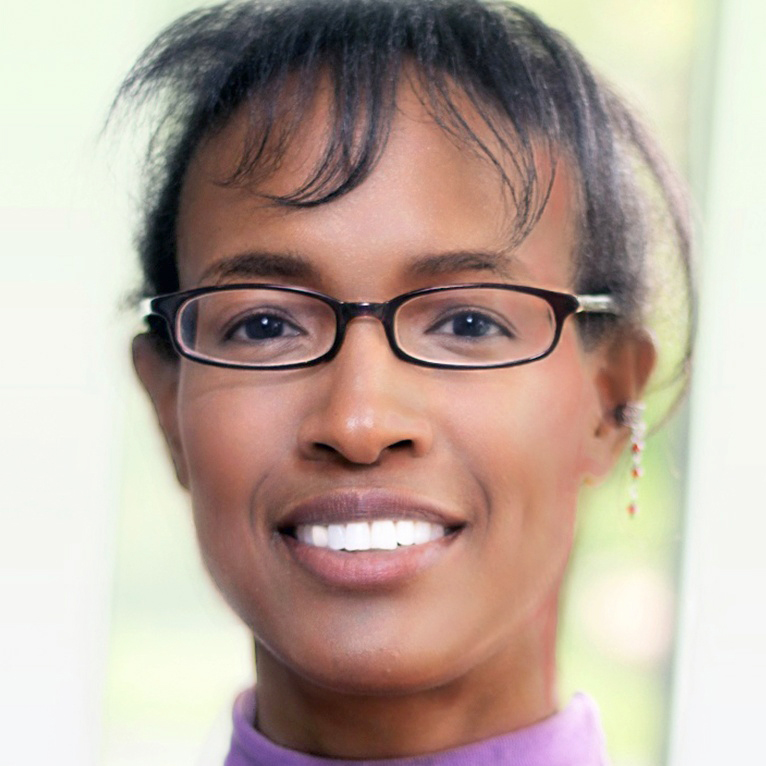 “Superconducting quantum bits (qubits) are a leading scheme for quantum computation, which may achieve revolutionary computing speeds and unprecedented levels of information security. Despite recent demonstrations of quantum supremacy, daunting challenges still remain, including lengthening the amount of time that information is retained in qubits by reducing coupling to energy loss mechanisms. Limited knowledge about the microscopic origin of these mechanisms and effects of material defects continue to hinder scalability and reproducibility. To tackle this issue, we will implement a novel approach to precisely identifying the defects responsible for energy loss in superconducting quantum circuits — precise defect landscape engineering of superconducting microwave resonators using accelerators at an ion beam lab. Subsequent comparisons of the microwave loss in resonators containing different types, locations and densities of defects will enable us to create unprecedentedly detailed and systematic correlations between energy loss and disorder. Complementary to this work, we will contribute to training a quantum-smart workforce. To satisfy the needs of the rapidly growing quantum industry and remain globally competitive, the U.S. must train an increasing number of quantum engineers. This requires developing specialized quantum engineering training programs. It also requires reaching beyond the existing pipelines and providing equal resources to a broader range of communities. To this end, my educational plan includes developing a novel laboratory course for the quantum engineering program at the Colorado School of Mines, engaging with Minority Serving Institutions to facilitate broadening participation in the quantum revolution, and preparing employment-ready graduates by matching students with industry mentors.”
“Superconducting quantum bits (qubits) are a leading scheme for quantum computation, which may achieve revolutionary computing speeds and unprecedented levels of information security. Despite recent demonstrations of quantum supremacy, daunting challenges still remain, including lengthening the amount of time that information is retained in qubits by reducing coupling to energy loss mechanisms. Limited knowledge about the microscopic origin of these mechanisms and effects of material defects continue to hinder scalability and reproducibility. To tackle this issue, we will implement a novel approach to precisely identifying the defects responsible for energy loss in superconducting quantum circuits — precise defect landscape engineering of superconducting microwave resonators using accelerators at an ion beam lab. Subsequent comparisons of the microwave loss in resonators containing different types, locations and densities of defects will enable us to create unprecedentedly detailed and systematic correlations between energy loss and disorder. Complementary to this work, we will contribute to training a quantum-smart workforce. To satisfy the needs of the rapidly growing quantum industry and remain globally competitive, the U.S. must train an increasing number of quantum engineers. This requires developing specialized quantum engineering training programs. It also requires reaching beyond the existing pipelines and providing equal resources to a broader range of communities. To this end, my educational plan includes developing a novel laboratory course for the quantum engineering program at the Colorado School of Mines, engaging with Minority Serving Institutions to facilitate broadening participation in the quantum revolution, and preparing employment-ready graduates by matching students with industry mentors.”
Ben Feldman, physics, Stanford University – Thermodynamic Characterization of Metal-insulator Transitions in Dual Gated Moiré Superlattices
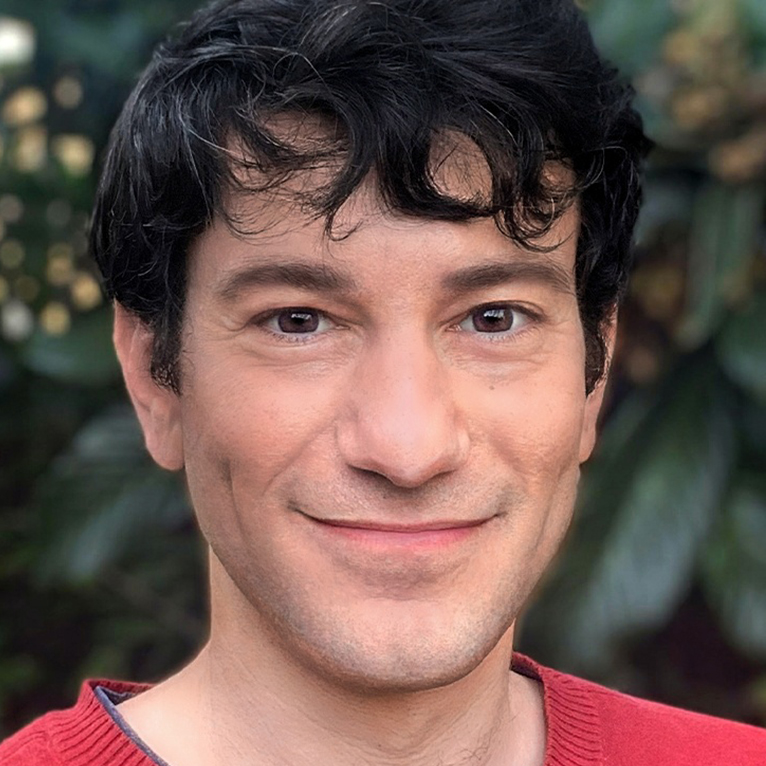 “The band structure of a material is dictated by hybridization between the orbitals of its constituent atoms. Most materials with partially filled bands are metals, but in systems where the repulsion between electrons is large compared to the bandwidth, electrons can become localized, leading to insulating behavior at half filling. The nature of this so-called Mott transition and the adjacent metallic states, which exhibit anomalous transport properties, are difficult to study in conventional materials systems and remain poorly understood. In this project, we seek to investigate these phenomena in a new synthetic strongly correlated materials platform formed by stacking individual two-dimensional materials with a small interlayer twist. This leads to spatially modulated coupling between layers, known as a moiré pattern, and can generate narrow electronic bands susceptible to the effects of interactions. By both probing the resistance of devices across such metal-insulator transitions as well as pursuing complementary sensing techniques to characterize the thermodynamic properties of the underlying electronic states, we will provide new insight into this longstanding puzzle. The educational goals of this project are to facilitate early undergraduate research experiences and retention among a diverse cohort of students by reducing barriers to access and helping them develop extended mentorship networks. To accomplish this, we will enact structural changes, ranging from encouraging students in introductory courses to pursue summer undergraduate research to a bidirectional process to facilitate matches between students and faculty mentors. We will also provide professional development activities for summer researchers and organize meetings with near-peers in small group settings to generate robust mentorship and support structures.”
“The band structure of a material is dictated by hybridization between the orbitals of its constituent atoms. Most materials with partially filled bands are metals, but in systems where the repulsion between electrons is large compared to the bandwidth, electrons can become localized, leading to insulating behavior at half filling. The nature of this so-called Mott transition and the adjacent metallic states, which exhibit anomalous transport properties, are difficult to study in conventional materials systems and remain poorly understood. In this project, we seek to investigate these phenomena in a new synthetic strongly correlated materials platform formed by stacking individual two-dimensional materials with a small interlayer twist. This leads to spatially modulated coupling between layers, known as a moiré pattern, and can generate narrow electronic bands susceptible to the effects of interactions. By both probing the resistance of devices across such metal-insulator transitions as well as pursuing complementary sensing techniques to characterize the thermodynamic properties of the underlying electronic states, we will provide new insight into this longstanding puzzle. The educational goals of this project are to facilitate early undergraduate research experiences and retention among a diverse cohort of students by reducing barriers to access and helping them develop extended mentorship networks. To accomplish this, we will enact structural changes, ranging from encouraging students in introductory courses to pursue summer undergraduate research to a bidirectional process to facilitate matches between students and faculty mentors. We will also provide professional development activities for summer researchers and organize meetings with near-peers in small group settings to generate robust mentorship and support structures.”
Kate Follette, astronomy, Amherst College – Moving Forward – Towards Accurate Recovery and Interpretation of Accreting Protoplanets and a Socially Just Undergraduate Astronomy Curriculum
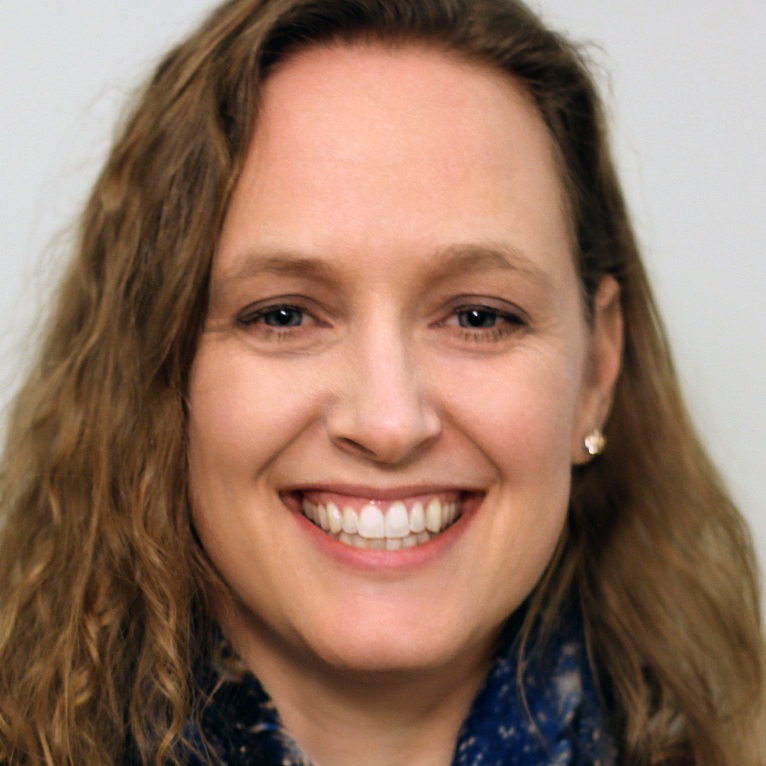 “We are entering an exciting era where it is possible to directly observe the formation of other planets. Soon, statistical samples of planet and brown dwarf growth (“accretion”) rates will allow us to observationally constrain theories of planet formation and the physics of planetary accretion. However, estimates of accretion rates for protoplanets are complicated by the need to disentangle planetary emission from that of the remnant star and planet forming material surrounding them, and further complicated by the unanswered question of whether accretion diagnostics developed for stars are even valid at planetary masses. In other words, we have not yet learned to isolate and interpret planetary accretion signatures accurately. Together with my team of primarily undergraduate researchers, I aim to leverage observations of protoplanets and accreting brown dwarfs to (a) develop new planetary signal extraction techniques, and (b) test the validity of the stellar accretion paradigm at planetary masses. In working on these pressing problems in planet formation with my group of brilliant research students, I've come to appreciate the power of a range of mentoring strategies in increasing the scientific and personal impact of our work, including: normalizing struggle, embracing failure, celebrating a range of career paths, and setting explicit norms around inclusion. Building on these lessons, I will incorporate into each of the courses in Amherst College's astronomy major sequence a curriculum designed to foster development of science identity, setting of inclusive community norms, and awareness of the broad benefits of equity in science, as well as assessing the efficacy of these interventions. By incorporating lessons learned through research mentorship into the astronomy major sequence at Amherst College, I hope to help shift the dialogue about the purpose of an undergraduate science major toward the integrated (not extracurricular) development of young scientists as whole people.”
“We are entering an exciting era where it is possible to directly observe the formation of other planets. Soon, statistical samples of planet and brown dwarf growth (“accretion”) rates will allow us to observationally constrain theories of planet formation and the physics of planetary accretion. However, estimates of accretion rates for protoplanets are complicated by the need to disentangle planetary emission from that of the remnant star and planet forming material surrounding them, and further complicated by the unanswered question of whether accretion diagnostics developed for stars are even valid at planetary masses. In other words, we have not yet learned to isolate and interpret planetary accretion signatures accurately. Together with my team of primarily undergraduate researchers, I aim to leverage observations of protoplanets and accreting brown dwarfs to (a) develop new planetary signal extraction techniques, and (b) test the validity of the stellar accretion paradigm at planetary masses. In working on these pressing problems in planet formation with my group of brilliant research students, I've come to appreciate the power of a range of mentoring strategies in increasing the scientific and personal impact of our work, including: normalizing struggle, embracing failure, celebrating a range of career paths, and setting explicit norms around inclusion. Building on these lessons, I will incorporate into each of the courses in Amherst College's astronomy major sequence a curriculum designed to foster development of science identity, setting of inclusive community norms, and awareness of the broad benefits of equity in science, as well as assessing the efficacy of these interventions. By incorporating lessons learned through research mentorship into the astronomy major sequence at Amherst College, I hope to help shift the dialogue about the purpose of an undergraduate science major toward the integrated (not extracurricular) development of young scientists as whole people.”
Wen-fai Fong, astronomy, Northwestern University – Toward the Next Breakthroughs in Time-Domain Astronomy: The Origins of Fast Radio Bursts
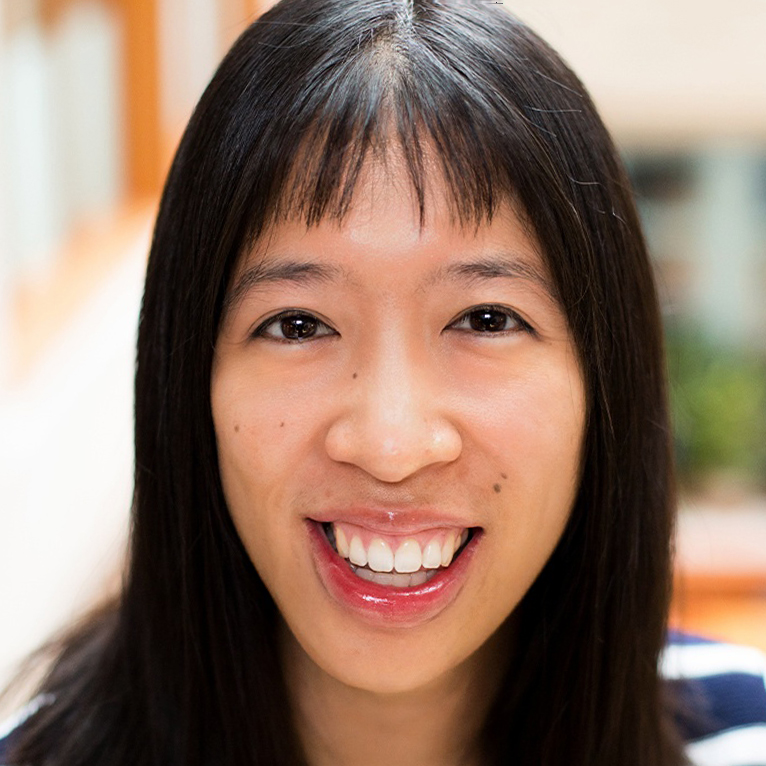 “Astronomical surveys that repeatedly image the sky have revealed that our universe is full of cosmic transients, or sources that change in brightness over time. This transient sky is owed to a myriad of time-dependent cosmic events, with discoveries enabled by advances in detector technology and data processing techniques. While most sources of transient emission uncovered by these surveys have been traced to their physical origins, there are important classes of cosmic explosions that have thus far eluded us. With this award, my research group and I aim to make significant contributions to one of the central unanswered questions in time-domain astronomy: What are the origins of Fast Radio Bursts? Our approach to this question will be multi-wavelength and holistic, driven by investigations that have yet to be conducted in a systematic way. We will use the full power of electromagnetic spectrum to perform systematic and detailed broad-band studies of their host galaxies, identify counterparts to fast radio bursts through rapid observations, and use archival information to unearth connections between Fast Radio Bursts and complementary (historical) transients. Motivated by the dearth of female and under-represented minority (f-URM) in physics, and the transformative social justice movement in our communities, we will develop educational programming to cultivate that crucial sense of belonging in higher education that research has shown to be so paramount to the persistence of f-URM students in physics and STEM at large. In particular, we will develop and teach an innovative and sustainable undergraduate course that is centered on the contributions of women and astronomers of color to major astronomical discoveries in history. We will also work to make Northwestern a recurring site of the Conferences for Undergraduate Women in Physics, providing a further avenue for talented but underserved f-URM students to matriculate to graduate school.”
“Astronomical surveys that repeatedly image the sky have revealed that our universe is full of cosmic transients, or sources that change in brightness over time. This transient sky is owed to a myriad of time-dependent cosmic events, with discoveries enabled by advances in detector technology and data processing techniques. While most sources of transient emission uncovered by these surveys have been traced to their physical origins, there are important classes of cosmic explosions that have thus far eluded us. With this award, my research group and I aim to make significant contributions to one of the central unanswered questions in time-domain astronomy: What are the origins of Fast Radio Bursts? Our approach to this question will be multi-wavelength and holistic, driven by investigations that have yet to be conducted in a systematic way. We will use the full power of electromagnetic spectrum to perform systematic and detailed broad-band studies of their host galaxies, identify counterparts to fast radio bursts through rapid observations, and use archival information to unearth connections between Fast Radio Bursts and complementary (historical) transients. Motivated by the dearth of female and under-represented minority (f-URM) in physics, and the transformative social justice movement in our communities, we will develop educational programming to cultivate that crucial sense of belonging in higher education that research has shown to be so paramount to the persistence of f-URM students in physics and STEM at large. In particular, we will develop and teach an innovative and sustainable undergraduate course that is centered on the contributions of women and astronomers of color to major astronomical discoveries in history. We will also work to make Northwestern a recurring site of the Conferences for Undergraduate Women in Physics, providing a further avenue for talented but underserved f-URM students to matriculate to graduate school.”
Stephen Fried, chemistry, Johns Hopkins University – Bringing New Life to Prebiotic Peptide Chemistry and to the Physical Chemistry Curriculum
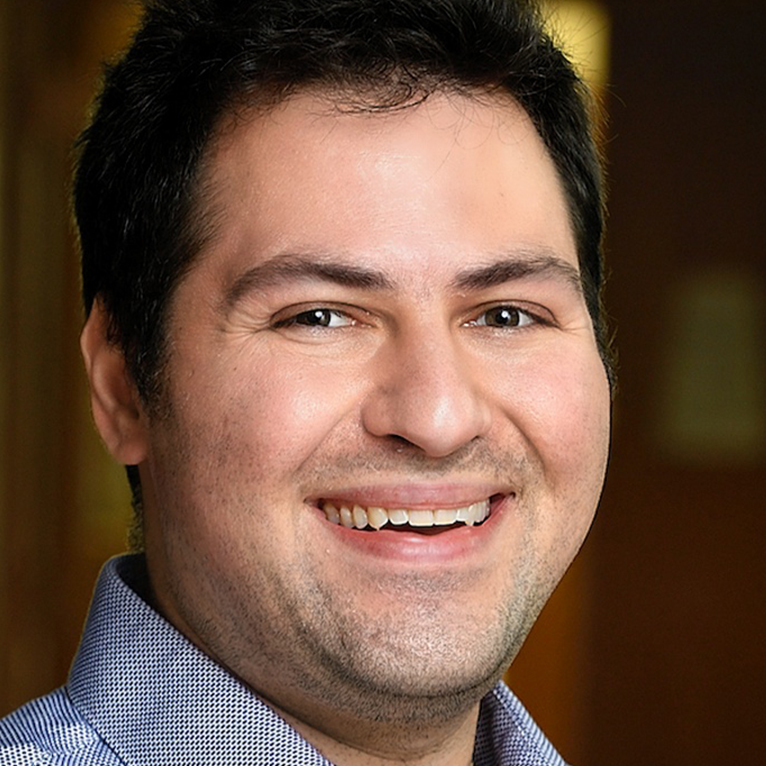 “In the beginning, Earth was full of amino acids. But how did these building blocks combine to form the first functional polymers before there was DNA to encode it? According to the amyloid world hypothesis, small proteins capable of assembling into fibers – similar to the ones that form during neurodegeneration – were initially selected for their ability to survive the harsh Archean environment. These fibers could then go on to form catalysts or compartments, critical for seeding the origin of life. With support as a Cottrell scholar, my team and I propose to recreate the conditions of the early Earth in the lab to see if such ancient amyloids can be resurrected. Then, using next-generation proteomics technologies, we plan to sequence the exact composition of these ancient amyloids. In addition to bringing ‘new life’ to prebiotic peptide research, I also seek to revitalize the physical chemistry curriculum. Instruction will focus on introducing programming and simulation to chemistry majors who previously received minimal exposure to computation during their training. This syllabus is coupled to broader proposed changes to the undergraduate experience to enhance scientific writing, research exposure, and computational skills. At stake is the fundamental question of whether the chemistry major only trains students to become chemists (as it traditionally has) or to become critical and versatile scientists capable of applying chemical knowledge to a range of pressing problems.”
“In the beginning, Earth was full of amino acids. But how did these building blocks combine to form the first functional polymers before there was DNA to encode it? According to the amyloid world hypothesis, small proteins capable of assembling into fibers – similar to the ones that form during neurodegeneration – were initially selected for their ability to survive the harsh Archean environment. These fibers could then go on to form catalysts or compartments, critical for seeding the origin of life. With support as a Cottrell scholar, my team and I propose to recreate the conditions of the early Earth in the lab to see if such ancient amyloids can be resurrected. Then, using next-generation proteomics technologies, we plan to sequence the exact composition of these ancient amyloids. In addition to bringing ‘new life’ to prebiotic peptide research, I also seek to revitalize the physical chemistry curriculum. Instruction will focus on introducing programming and simulation to chemistry majors who previously received minimal exposure to computation during their training. This syllabus is coupled to broader proposed changes to the undergraduate experience to enhance scientific writing, research exposure, and computational skills. At stake is the fundamental question of whether the chemistry major only trains students to become chemists (as it traditionally has) or to become critical and versatile scientists capable of applying chemical knowledge to a range of pressing problems.”
Ryan Hadt, chemistry, California Institute of Technology – Research: Learning How to Engineer Spin-Phonon Coupling in Molecules and Materials; Educational: Tackling Theoretical Topics in Inorganic Chemistry: A Worked Example Approach
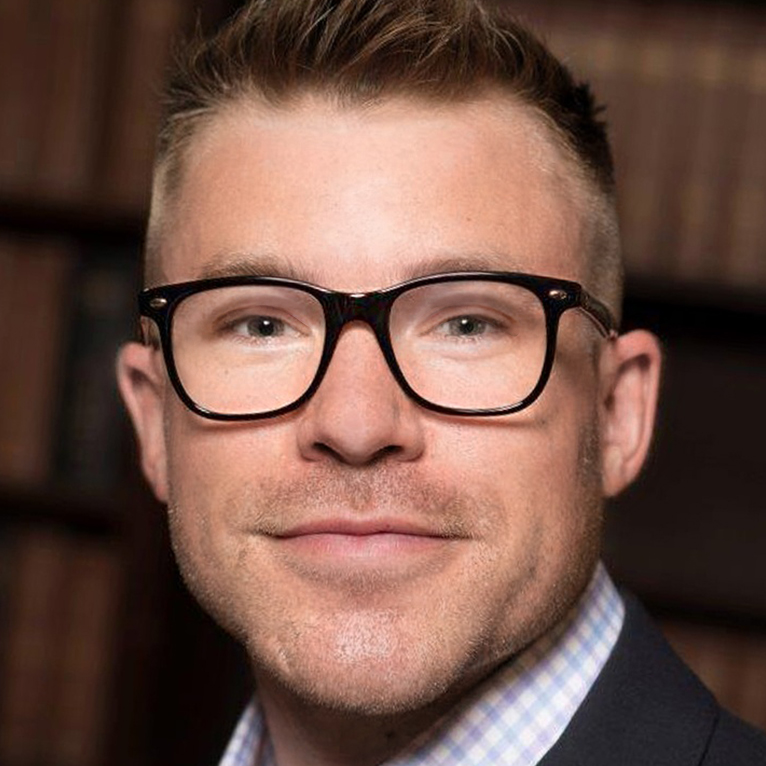 “Magnetic molecules with unpaired electrons form the basis for emergent technologies in quantum computing and high-density information storage. For example, unpaired electron spins constitute a quantum bit (qubit), the fundamental unit of quantum information; they can also enable single ion magnetism, a quantum phenomenon that could lead to the ultimate miniaturization of electronic devices and spatial encoding of information. Through systematic chemical modifications to magnetic molecular systems, we seek to understand how a molecule’s chemical structure and bonding influence its ability to exhibit the necessary quantum properties of a qubit or single ion magnet, especially at elevated temperatures. We further aim to incorporate magnetic molecules into scalable architectures – in particular, 2D layered materials – with the goal of understanding how their quantum properties behave in one versus two dimensions. Our research will develop new combined experimental and theoretical tools and is coupled to our educational plan, in which we aim to create an open educational resource (OER) that will provide students with critical worked examples and guided self-explanations to lower the barrier to mastering theoretical topics encountered within the quantum and inorganic chemistry classroom and research settings. The positive effects of OERs have been demonstrated to be especially important for populations of historically underserved students, where access to resources is often a deciding factor in their success.”
“Magnetic molecules with unpaired electrons form the basis for emergent technologies in quantum computing and high-density information storage. For example, unpaired electron spins constitute a quantum bit (qubit), the fundamental unit of quantum information; they can also enable single ion magnetism, a quantum phenomenon that could lead to the ultimate miniaturization of electronic devices and spatial encoding of information. Through systematic chemical modifications to magnetic molecular systems, we seek to understand how a molecule’s chemical structure and bonding influence its ability to exhibit the necessary quantum properties of a qubit or single ion magnet, especially at elevated temperatures. We further aim to incorporate magnetic molecules into scalable architectures – in particular, 2D layered materials – with the goal of understanding how their quantum properties behave in one versus two dimensions. Our research will develop new combined experimental and theoretical tools and is coupled to our educational plan, in which we aim to create an open educational resource (OER) that will provide students with critical worked examples and guided self-explanations to lower the barrier to mastering theoretical topics encountered within the quantum and inorganic chemistry classroom and research settings. The positive effects of OERs have been demonstrated to be especially important for populations of historically underserved students, where access to resources is often a deciding factor in their success.”
Christine Hagan, chemistry, College of the Holy Cross – Mechanistic Studies of Protein Toxin Delivery by Bacterial Contact-Dependent Inhibition Systems
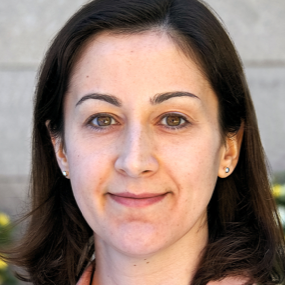 “New therapeutics are urgently needed to treat infections caused by Gram-negative bacteria, but it is difficult to develop new antibiotics capable of killing these organisms because their cells are surrounded by a membrane that is impermeable to many small, drug-like molecules. Some Gram-negative bacteria, however, deliver large protein toxins across the membranes of competing bacteria in their environments. My lab aims to understand how these protein toxins are transported across a membrane that normally excludes much smaller molecules in order to identify principles that could guide the development of novel therapeutics. We will focus on the mechanism of a contact-dependent inhibition system from E. coli and will develop a biochemical assay to monitor its transport of a protein toxin across a model membrane. Undergraduate students from underrepresented groups will participate in this research in a summer course before their first year of college. Students will learn basic chemistry and biology concepts, make connections between them, and apply them to a research question. The summer course will be tied to a system of peer support and faculty mentoring during the academic year, which aims to improve student retention in STEM courses.”
“New therapeutics are urgently needed to treat infections caused by Gram-negative bacteria, but it is difficult to develop new antibiotics capable of killing these organisms because their cells are surrounded by a membrane that is impermeable to many small, drug-like molecules. Some Gram-negative bacteria, however, deliver large protein toxins across the membranes of competing bacteria in their environments. My lab aims to understand how these protein toxins are transported across a membrane that normally excludes much smaller molecules in order to identify principles that could guide the development of novel therapeutics. We will focus on the mechanism of a contact-dependent inhibition system from E. coli and will develop a biochemical assay to monitor its transport of a protein toxin across a model membrane. Undergraduate students from underrepresented groups will participate in this research in a summer course before their first year of college. Students will learn basic chemistry and biology concepts, make connections between them, and apply them to a research question. The summer course will be tied to a system of peer support and faculty mentoring during the academic year, which aims to improve student retention in STEM courses.”
Sarah Keane, chemistry, University of Michigan – RNA Matchmaker: The Role of Loops and Mismatches in RNA Processing
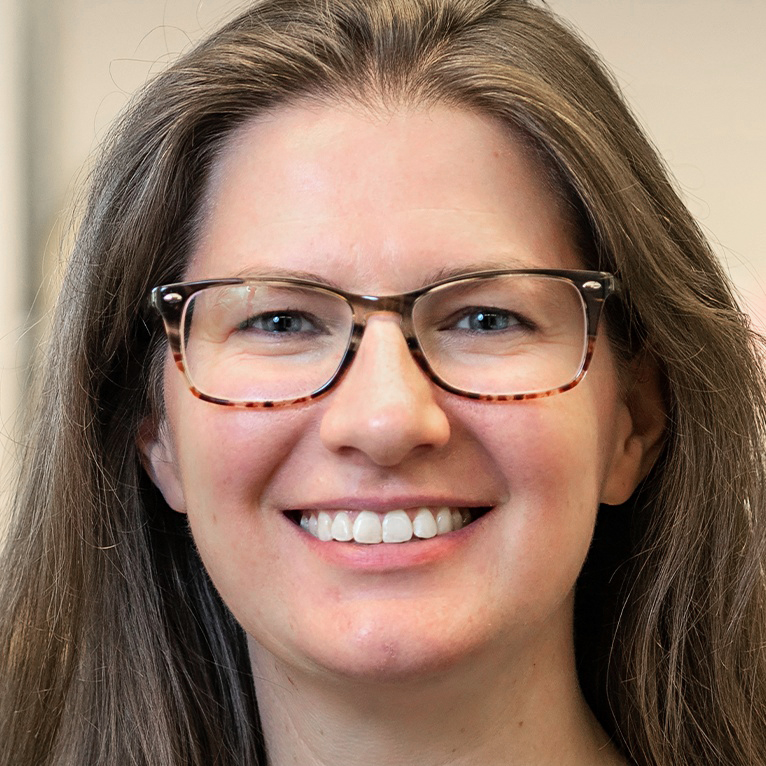 “RNAs play important regulatory roles in a wide number of cellular processes. MicroRNAs are a family of small non-coding RNAs that are important post-transcriptional regulators of gene expression. Dysregulation of specific microRNA levels, either reduced or enhanced expression, can lead to disease. To maintain proper microRNA expression levels, the enzymatic processing of microRNAs from their primary and precursor elements must be strictly controlled. However, the molecular details governing this strict control of microRNA biogenesis are not fully understood. Our research program seeks to leverage our expertise in NMR spectroscopy and RNA biochemistry to examine the roles of unpaired and mismatched nucleotides in the enzymatic production of microRNAs. We will examine the dynamics of these unpaired nucleotides and monitor changes in RNA structure that occur during processing. My educational initiatives are aimed at providing authentic learning experiences for upper-level undergraduate students studying Biochemistry and Biophysics. Students will be provided formal training in reading primary literature and encouraged to learn about biochemistry through a series of topical papers, rather than a textbook. Similarly, students taking a biophysics laboratory course will be able to conduct new research projects addressing questions about RNA unfolding and thermodynamics, collecting and analyzing data, and ultimately reporting their findings to the broader scientific community. Additionally, I will work closely with graduate students who are interested in teaching at the college level, providing them with valuable insight into curricular development and instruction that is typically invisible to them as students.”
“RNAs play important regulatory roles in a wide number of cellular processes. MicroRNAs are a family of small non-coding RNAs that are important post-transcriptional regulators of gene expression. Dysregulation of specific microRNA levels, either reduced or enhanced expression, can lead to disease. To maintain proper microRNA expression levels, the enzymatic processing of microRNAs from their primary and precursor elements must be strictly controlled. However, the molecular details governing this strict control of microRNA biogenesis are not fully understood. Our research program seeks to leverage our expertise in NMR spectroscopy and RNA biochemistry to examine the roles of unpaired and mismatched nucleotides in the enzymatic production of microRNAs. We will examine the dynamics of these unpaired nucleotides and monitor changes in RNA structure that occur during processing. My educational initiatives are aimed at providing authentic learning experiences for upper-level undergraduate students studying Biochemistry and Biophysics. Students will be provided formal training in reading primary literature and encouraged to learn about biochemistry through a series of topical papers, rather than a textbook. Similarly, students taking a biophysics laboratory course will be able to conduct new research projects addressing questions about RNA unfolding and thermodynamics, collecting and analyzing data, and ultimately reporting their findings to the broader scientific community. Additionally, I will work closely with graduate students who are interested in teaching at the college level, providing them with valuable insight into curricular development and instruction that is typically invisible to them as students.”
Daniel Keedy, chemistry, CUNY Advanced Science Research Center & City College of New York – Illuminating Structural Motions that Underlie Allostery in Dynamic Phosphatase Enzymes
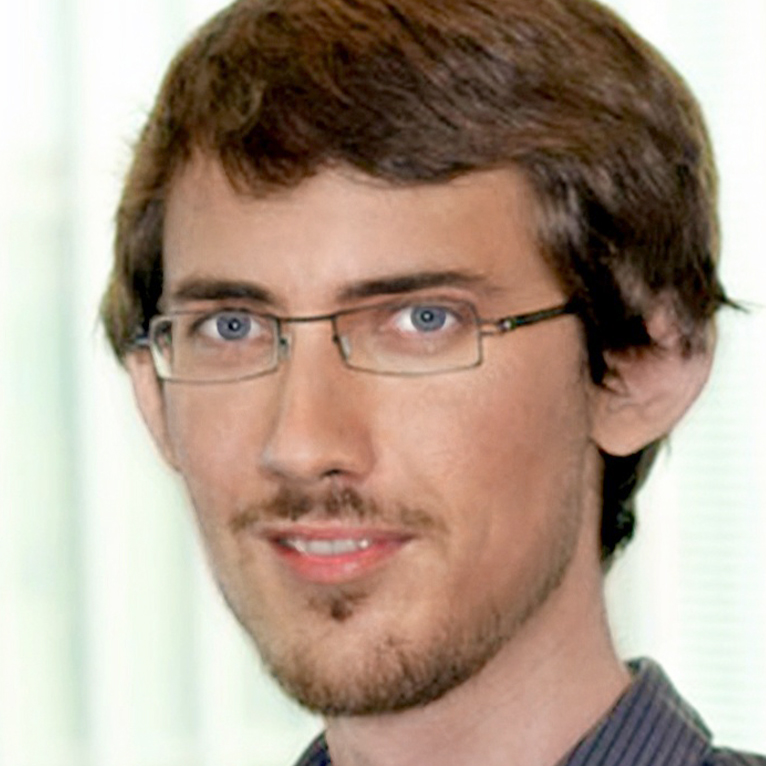 “Enzymes are masterpieces of evolution, catalyzing specific biochemical reactions with extraordinary efficiency – but our fundamental understanding of how they work at the molecular level remains incomplete, as evidenced by the paltry performance of rationally designed enzymes compared to natural ones. To address this gap, I aim to shed new light on the underappreciated role of atomic motions in enzyme function by using emerging experimental methods to measure not only where atoms in an enzyme structure are positioned, but also how they move during catalysis or regulation – even allowing the recording of all-atom “stop-motion molecular movies” of enzymes in action. Specifically, I will compare and contrast atomic motions in different members of a diverse and medically important family of human enzymes called phosphatases, which all have a similar three-dimensional shape, yet have distinct amino acid sequences that result in unique biological roles in cells as well as different human disease associations. To integrate research and teaching, I will revamp my large undergraduate biochemistry course to center on a novel, group-based, crowdsourced project in which students will prospectively design amino acid mutations to phosphatases, discuss and advocate for their designs, participate in virtual field trips to my research lab where the top designs will be biochemically assayed by undergraduate researchers from previous semesters of the course, and reconvene to discuss implications of the new data. Through this unique process, the students will experience the complete scientific cycle, from hypothesis to experiments to results to conclusions, while actively contributing to research that helps complete our picture of how amino acid sequence dictates enzyme function.”
“Enzymes are masterpieces of evolution, catalyzing specific biochemical reactions with extraordinary efficiency – but our fundamental understanding of how they work at the molecular level remains incomplete, as evidenced by the paltry performance of rationally designed enzymes compared to natural ones. To address this gap, I aim to shed new light on the underappreciated role of atomic motions in enzyme function by using emerging experimental methods to measure not only where atoms in an enzyme structure are positioned, but also how they move during catalysis or regulation – even allowing the recording of all-atom “stop-motion molecular movies” of enzymes in action. Specifically, I will compare and contrast atomic motions in different members of a diverse and medically important family of human enzymes called phosphatases, which all have a similar three-dimensional shape, yet have distinct amino acid sequences that result in unique biological roles in cells as well as different human disease associations. To integrate research and teaching, I will revamp my large undergraduate biochemistry course to center on a novel, group-based, crowdsourced project in which students will prospectively design amino acid mutations to phosphatases, discuss and advocate for their designs, participate in virtual field trips to my research lab where the top designs will be biochemically assayed by undergraduate researchers from previous semesters of the course, and reconvene to discuss implications of the new data. Through this unique process, the students will experience the complete scientific cycle, from hypothesis to experiments to results to conclusions, while actively contributing to research that helps complete our picture of how amino acid sequence dictates enzyme function.”
Michael Larsen, chemistry, Western Washington University – Diverse N-Functionalized Polyureas by Cationic Ring-Opening Polymerization of Iminooxazolidines
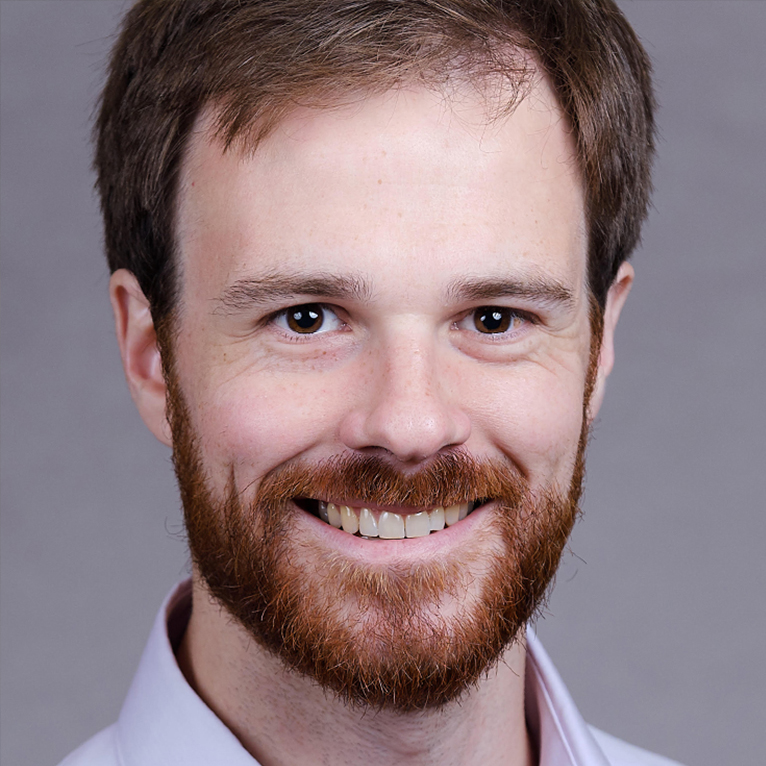 “As chemists, one of our goals is to explore the possible uses of new molecules we discover. This Cottrell Scholar Award will support us in developing previously unknown polymeric materials based on an underexplored type of molecule. By using the tools of synthetic chemistry, we can tailor the properties of these materials – for example, making them degradable or responsive to light. As a result, we hope to unlock interesting properties and expand the scope of known polymer behavior. In conjunction with these scientific goals, the award will support the creation of professional development workshops and a formal recruiting program to aid our undergraduates’ placement and success in regional industry. These programs will provide students with career opportunities that are not reliant on informal networks, a documented source of inequity and bias in the professional world.”
“As chemists, one of our goals is to explore the possible uses of new molecules we discover. This Cottrell Scholar Award will support us in developing previously unknown polymeric materials based on an underexplored type of molecule. By using the tools of synthetic chemistry, we can tailor the properties of these materials – for example, making them degradable or responsive to light. As a result, we hope to unlock interesting properties and expand the scope of known polymer behavior. In conjunction with these scientific goals, the award will support the creation of professional development workshops and a formal recruiting program to aid our undergraduates’ placement and success in regional industry. These programs will provide students with career opportunities that are not reliant on informal networks, a documented source of inequity and bias in the professional world.”
Lauren Marbella, chemistry, Columbia University – Tracking (Electro)Chemical Reduction at Electrode/Electrolyte Interfaces with Operando NMR
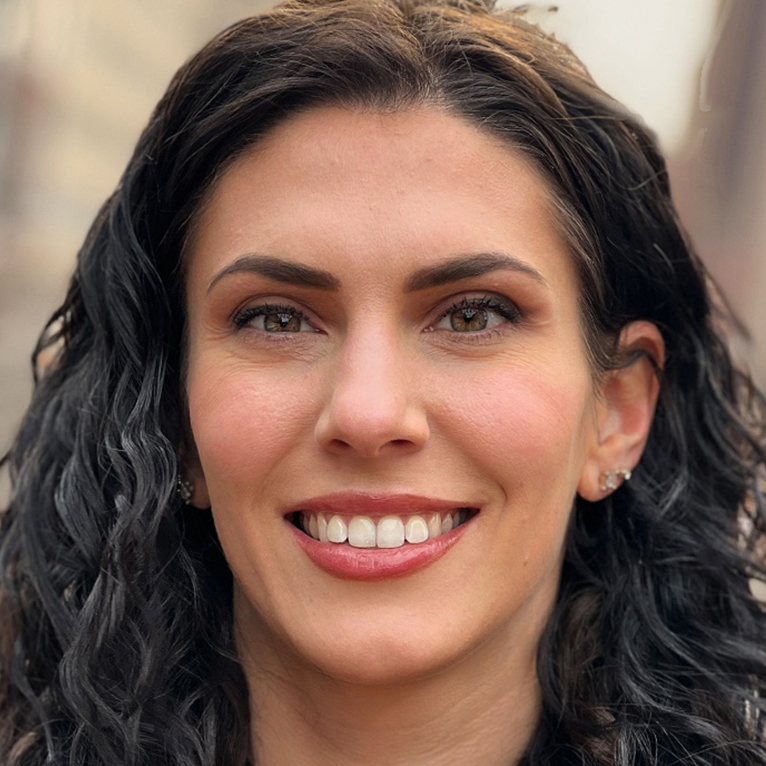 “Reactions at electrochemical interfaces critically impact the lifetime and safety of next-generation Li batteries. Despite this direct link to battery performance, interfacial reactivity is not well understood because it is exceptionally challenging to monitor during battery usage. In this project, we will use operando nuclear magnetic resonance (NMR) spectroscopy to provide the chemical and temporal resolution necessary to elucidate (electro)chemical reduction reactions that occur at electrode/electrolyte interfaces in Li metal batteries. This research program is coupled to educational activities that will establish an inclusive learning environment for NMR education and research training, including a series of new lecture modules that improve mathematical readiness, encourage students to establish their own science identity, incorporate gameplay into learning objectives, and provide hands-on training for solid-state NMR.”
“Reactions at electrochemical interfaces critically impact the lifetime and safety of next-generation Li batteries. Despite this direct link to battery performance, interfacial reactivity is not well understood because it is exceptionally challenging to monitor during battery usage. In this project, we will use operando nuclear magnetic resonance (NMR) spectroscopy to provide the chemical and temporal resolution necessary to elucidate (electro)chemical reduction reactions that occur at electrode/electrolyte interfaces in Li metal batteries. This research program is coupled to educational activities that will establish an inclusive learning environment for NMR education and research training, including a series of new lecture modules that improve mathematical readiness, encourage students to establish their own science identity, incorporate gameplay into learning objectives, and provide hands-on training for solid-state NMR.”
Krystle McLaughlin, chemistry, Vassar College – Structural Basis for the Conjugative Spread of Antibiotic Resistance
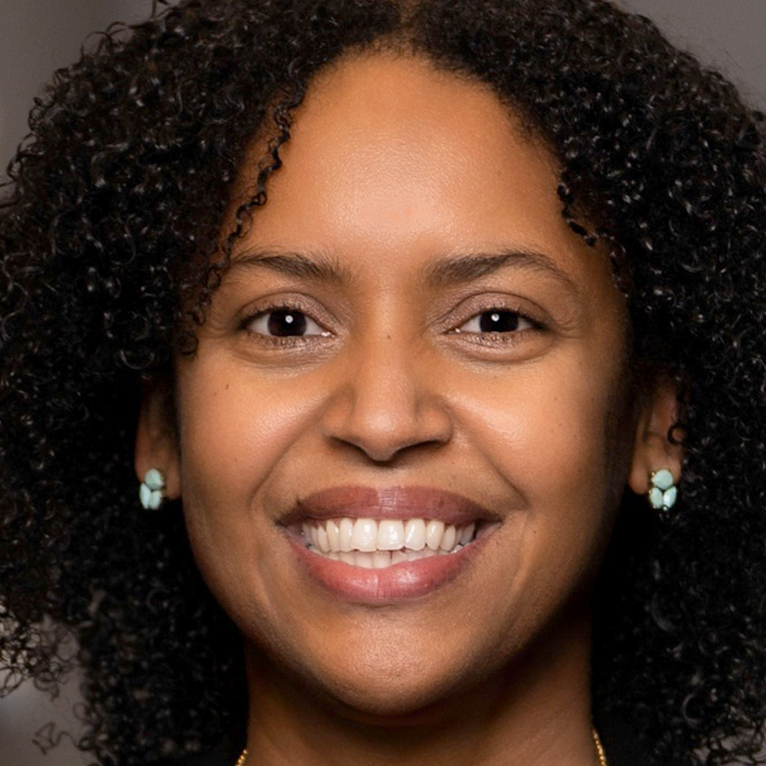 “Antibiotic resistance poses a major threat to public health, with over 2.8 million antibiotic-resistant infections in the United States annually. Genes that confer antibiotic resistance to bacteria are often found on small circular pieces of DNA called plasmids. Copies of plasmids can be shared throughout bacterial populations via a process called conjugative plasmid transfer, a primary route for the spread of antibiotic resistance. Several key steps during conjugative plasmid transfer are coordinated by a protein complex called the relaxosome. Despite its central importance, the underlying mechanisms of the relaxosome are still poorly understood. How the relaxosome proteins interact with each other remains unknown as we lack a structure of the assembled complex, with only a few individual relaxosome protein structures available. My research aims to bridge this gap in knowledge using a combination of techniques, including X-ray crystallography, to obtain high resolution three-dimensional structures of the relaxosome. Solution of these structures will broaden our knowledge of conjugative plasmid transfer and may reveal new strategies for reducing the prevalence and spread of antibiotic resistance. For my education proposal, I am developing a protein X-ray crystallography focused biochemistry lab, which exposes students to an authentic research experience. While X-ray crystallography is one of the most commonly used techniques for obtaining three-dimensional structures of proteins, it is rarely taught to students at the undergraduate level. Through development of this research lab experience we will create protein X-ray crystallography instructional materials that will be freely available to use, introducing many more students to this fundamental technique.”
“Antibiotic resistance poses a major threat to public health, with over 2.8 million antibiotic-resistant infections in the United States annually. Genes that confer antibiotic resistance to bacteria are often found on small circular pieces of DNA called plasmids. Copies of plasmids can be shared throughout bacterial populations via a process called conjugative plasmid transfer, a primary route for the spread of antibiotic resistance. Several key steps during conjugative plasmid transfer are coordinated by a protein complex called the relaxosome. Despite its central importance, the underlying mechanisms of the relaxosome are still poorly understood. How the relaxosome proteins interact with each other remains unknown as we lack a structure of the assembled complex, with only a few individual relaxosome protein structures available. My research aims to bridge this gap in knowledge using a combination of techniques, including X-ray crystallography, to obtain high resolution three-dimensional structures of the relaxosome. Solution of these structures will broaden our knowledge of conjugative plasmid transfer and may reveal new strategies for reducing the prevalence and spread of antibiotic resistance. For my education proposal, I am developing a protein X-ray crystallography focused biochemistry lab, which exposes students to an authentic research experience. While X-ray crystallography is one of the most commonly used techniques for obtaining three-dimensional structures of proteins, it is rarely taught to students at the undergraduate level. Through development of this research lab experience we will create protein X-ray crystallography instructional materials that will be freely available to use, introducing many more students to this fundamental technique.”
Jorge Muñoz, physics, University of Texas at El Paso – Fast and Accurate Computation of Anharmonic Phonons in Polymorphic Materials
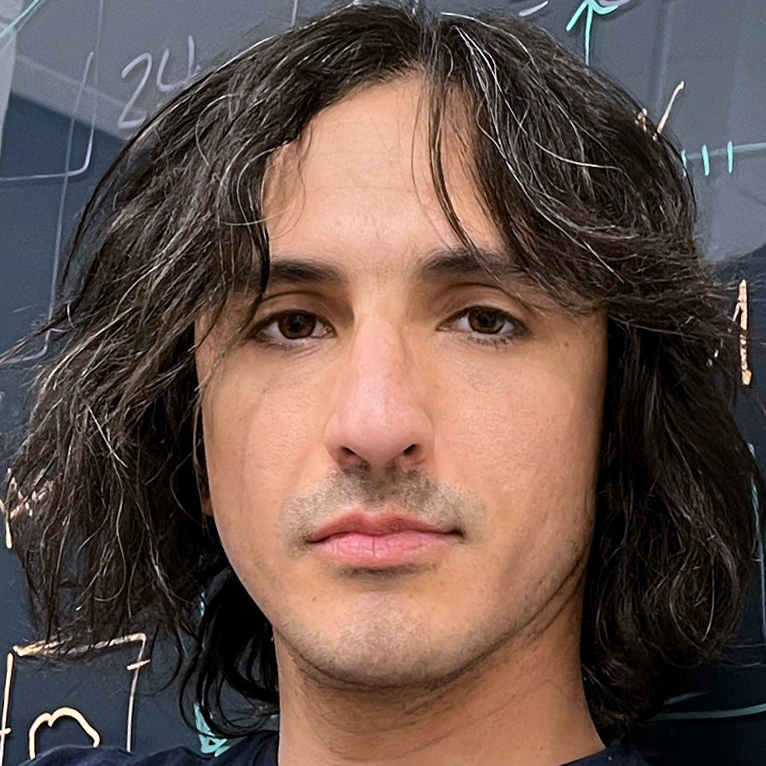 “Just like an apple falls to the ground to minimize its gravitational potential energy, atoms in materials arrange themselves in structures that minimize their free energy at a given pressure and temperature, but the free energy has both energetic and entropic components. The properties of materials depend on the arrangement of their atoms, so understanding and predicting phase stability is paramount. Modern materials databases have shown that materials with the same composition but different structure (polymorphs) are often separated by small enough energies that entropic contributions become critical for phase stability. There are computational methods to calculate entropic contributions from first principles, but large studies are unfeasible due to computational cost. At issue is the computation of interatomic force constants, tensorial quantities related to the potential energy that suffer from the curse of dimensionality. We will use a novel data representation based on mathematical graphs to reduce the number of data points needed to train accurate machine learning models of potential energy surfaces, and we will directly evaluate the derivatives of the surfaces by performing differentiation on the computer code that describes the machine learning models, bypassing traditional numerical differentiation. Materials physics bridges interdisciplinary work in chemistry and engineering and has many practical applications. We will develop an algebra-based freshman-level computational materials physics course at The University of Texas at El Paso to expose students as early as possible to science, mentoring, and scientific collaboration via research-like team-based learning activities that are culturally relevant. The course materials will be made public as open educational resources.”
“Just like an apple falls to the ground to minimize its gravitational potential energy, atoms in materials arrange themselves in structures that minimize their free energy at a given pressure and temperature, but the free energy has both energetic and entropic components. The properties of materials depend on the arrangement of their atoms, so understanding and predicting phase stability is paramount. Modern materials databases have shown that materials with the same composition but different structure (polymorphs) are often separated by small enough energies that entropic contributions become critical for phase stability. There are computational methods to calculate entropic contributions from first principles, but large studies are unfeasible due to computational cost. At issue is the computation of interatomic force constants, tensorial quantities related to the potential energy that suffer from the curse of dimensionality. We will use a novel data representation based on mathematical graphs to reduce the number of data points needed to train accurate machine learning models of potential energy surfaces, and we will directly evaluate the derivatives of the surfaces by performing differentiation on the computer code that describes the machine learning models, bypassing traditional numerical differentiation. Materials physics bridges interdisciplinary work in chemistry and engineering and has many practical applications. We will develop an algebra-based freshman-level computational materials physics course at The University of Texas at El Paso to expose students as early as possible to science, mentoring, and scientific collaboration via research-like team-based learning activities that are culturally relevant. The course materials will be made public as open educational resources.”
Lisa Olshansky, chemistry, University of Illinois at Urbana-Champaign – Exploring and Exploiting Conformational Dynamics for Proton-Coupled Electron Transfer
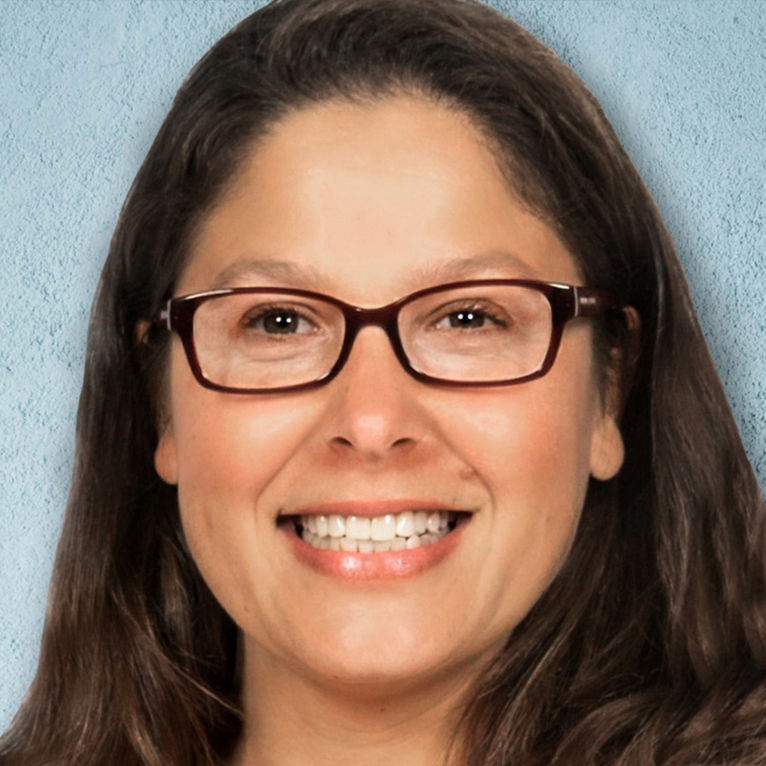 “Proton-coupled electron transfer (PCET) processes mediated by metalloenzymes that govern global bio- and geochemical cycles and are nearly always controlled by rate-limiting protein conformational changes. However, most synthetic and artificial PCET systems ignore the powerful role that conformational gating can play. The Olshansky lab is creating metallocofactor mimics in which carboxylate-mediated hydrogen bond (H-bond) interactions are manipulated to control PCET reactivity. They will use these systems to define factors governing proton and electron transfer energetics and kinetics as influenced by carboxylate shift dynamics. In synergistic educational work, I have started an initiative called C2 (Chemistry through Community) that promotes a sense of community and sharing of knowledge among graduate and undergraduate students from underrepresented groups. The program combines one-on-one peer mentorship, networking and professional development workshops, research fellowships, presentations, and travel awards to create a community of scholars in which assumed knowledge is explicitly transmitted, role models are celebrated, and excellence and diversity thrive at Illinois Chemistry.”
“Proton-coupled electron transfer (PCET) processes mediated by metalloenzymes that govern global bio- and geochemical cycles and are nearly always controlled by rate-limiting protein conformational changes. However, most synthetic and artificial PCET systems ignore the powerful role that conformational gating can play. The Olshansky lab is creating metallocofactor mimics in which carboxylate-mediated hydrogen bond (H-bond) interactions are manipulated to control PCET reactivity. They will use these systems to define factors governing proton and electron transfer energetics and kinetics as influenced by carboxylate shift dynamics. In synergistic educational work, I have started an initiative called C2 (Chemistry through Community) that promotes a sense of community and sharing of knowledge among graduate and undergraduate students from underrepresented groups. The program combines one-on-one peer mentorship, networking and professional development workshops, research fellowships, presentations, and travel awards to create a community of scholars in which assumed knowledge is explicitly transmitted, role models are celebrated, and excellence and diversity thrive at Illinois Chemistry.”
Zachariah Page, chemistry, University of Texas at Austin – Color-Coded Orthogonal Photochemistry from a Single Dye & Guiding Student Mindsets in Organic Chemistry
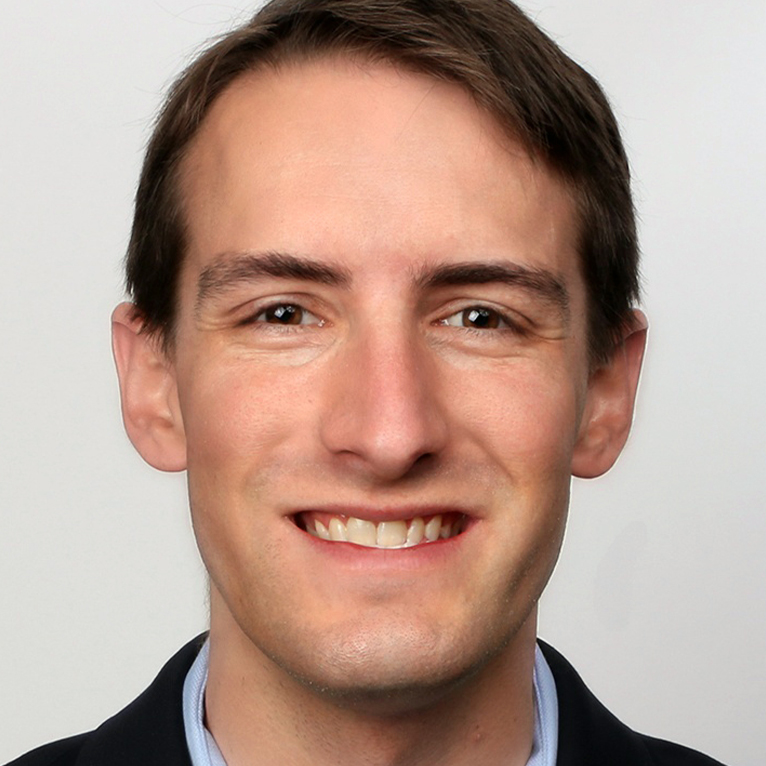 “The Page Research group will create next-generation multifunctional plastics to improve the health and well-being of society by developing energy efficient precision chemistry driven by visible light. This objective will be accomplished by synthesizing and analyzing novel dye molecules that are individually capable of absorbing two distinct colors of light and subsequently converting the energy stored within each color of light into discrete chemical reactions. The specific light-activated chemical reactions will result in polymers with properties, and thus functionality, that are directly associated with the color of light used to make them. Success in this endeavor will ultimately provide a means to fabricate 3D objects with properties (e.g., hard/soft, conductive/insulating, opaque/transparent, etc.) that can be selectively incorporated in predefined locations, a capability with transformative implications on the production of medical and aerospace devices, among many others. Additionally, I aim to improve diversity in STEM by breaking negative perceptions surrounding organic chemistry that disproportionately preclude success of underprivileged college students. This objective will be accomplished by systematically introducing mindset intervention strategies into large lecture (>300 pupils) Organic Chemistry I classes at The University of Texas at Austin, and evaluating efficacy on learning and retention of underprivileged students in STEM.”
“The Page Research group will create next-generation multifunctional plastics to improve the health and well-being of society by developing energy efficient precision chemistry driven by visible light. This objective will be accomplished by synthesizing and analyzing novel dye molecules that are individually capable of absorbing two distinct colors of light and subsequently converting the energy stored within each color of light into discrete chemical reactions. The specific light-activated chemical reactions will result in polymers with properties, and thus functionality, that are directly associated with the color of light used to make them. Success in this endeavor will ultimately provide a means to fabricate 3D objects with properties (e.g., hard/soft, conductive/insulating, opaque/transparent, etc.) that can be selectively incorporated in predefined locations, a capability with transformative implications on the production of medical and aerospace devices, among many others. Additionally, I aim to improve diversity in STEM by breaking negative perceptions surrounding organic chemistry that disproportionately preclude success of underprivileged college students. This objective will be accomplished by systematically introducing mindset intervention strategies into large lecture (>300 pupils) Organic Chemistry I classes at The University of Texas at Austin, and evaluating efficacy on learning and retention of underprivileged students in STEM.”
Amanda Patrick, chemistry, Mississippi State University – Winnowing the Possible Identities of Metabolomics "Features" by Hydrogen-Deuterium Exchange Mass Spectrometry
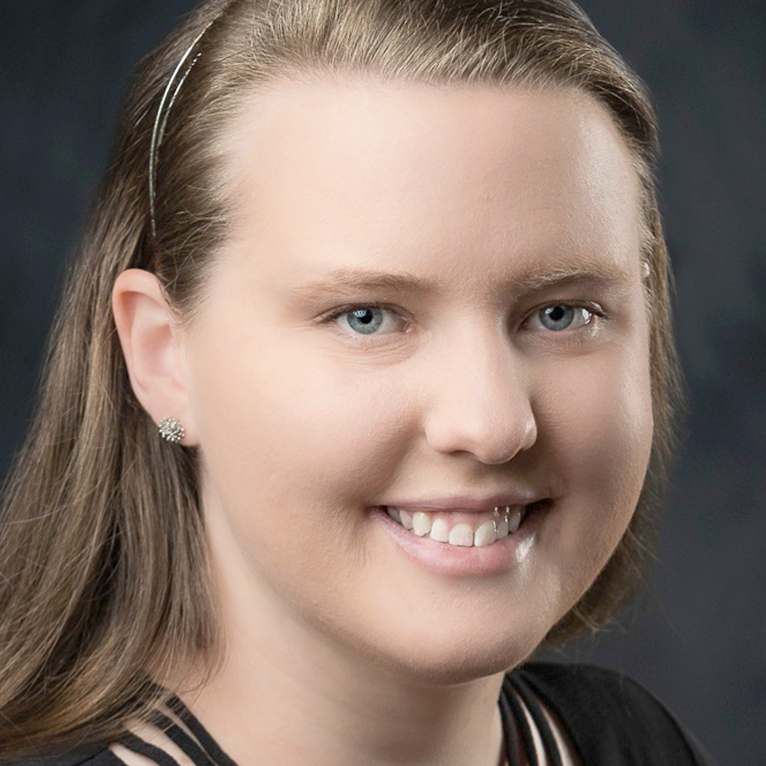 “The amount and type of molecules present in biological samples can be indicative of normal biological processes or of abnormalities, like diseases. Mass spectrometry, a scientific technique used to “weigh” molecules, is often used to identify which ones play a role in the topic of study by determining which “features” increase or decrease in the experiment versus control samples. Ideally, the “features” can be identified as specific biomolecules, but oftentimes mass alone provides an ambiguous result, with several possible structural identities for a given mass. The goal of this research is to evaluate an additional analysis step, called hydrogen-deuterium exchange, to gain more structural information about the molecules and, thereby, narrow down the possible structural identities. This project will seek to evaluate the ability to predict the number of exchanges that will take place, the power of this approach for narrowing down the possible candidate structures, and the best way to integrate this step with current experimental methods and approaches. Alongside this scientific project, an educational component aimed at better integrating science and writing will be pursued. This educational component will be twofold. The first component will integrate writing and creative assignments, such as making comics or designing infographics, into each of the chemistry courses I teach at the undergraduate and graduate level. The second component will focus on the design, implementation, and evaluation of a Summer Science Writing Workshop to help undergraduate and graduate student researchers in the chemistry department hone skills for job searches, formal scientific communication, and informal science communication.”
“The amount and type of molecules present in biological samples can be indicative of normal biological processes or of abnormalities, like diseases. Mass spectrometry, a scientific technique used to “weigh” molecules, is often used to identify which ones play a role in the topic of study by determining which “features” increase or decrease in the experiment versus control samples. Ideally, the “features” can be identified as specific biomolecules, but oftentimes mass alone provides an ambiguous result, with several possible structural identities for a given mass. The goal of this research is to evaluate an additional analysis step, called hydrogen-deuterium exchange, to gain more structural information about the molecules and, thereby, narrow down the possible structural identities. This project will seek to evaluate the ability to predict the number of exchanges that will take place, the power of this approach for narrowing down the possible candidate structures, and the best way to integrate this step with current experimental methods and approaches. Alongside this scientific project, an educational component aimed at better integrating science and writing will be pursued. This educational component will be twofold. The first component will integrate writing and creative assignments, such as making comics or designing infographics, into each of the chemistry courses I teach at the undergraduate and graduate level. The second component will focus on the design, implementation, and evaluation of a Summer Science Writing Workshop to help undergraduate and graduate student researchers in the chemistry department hone skills for job searches, formal scientific communication, and informal science communication.”
Orit Peleg, physics, University of Colorado Boulder – The Physics of Firefly Communications: Principles and Predictions
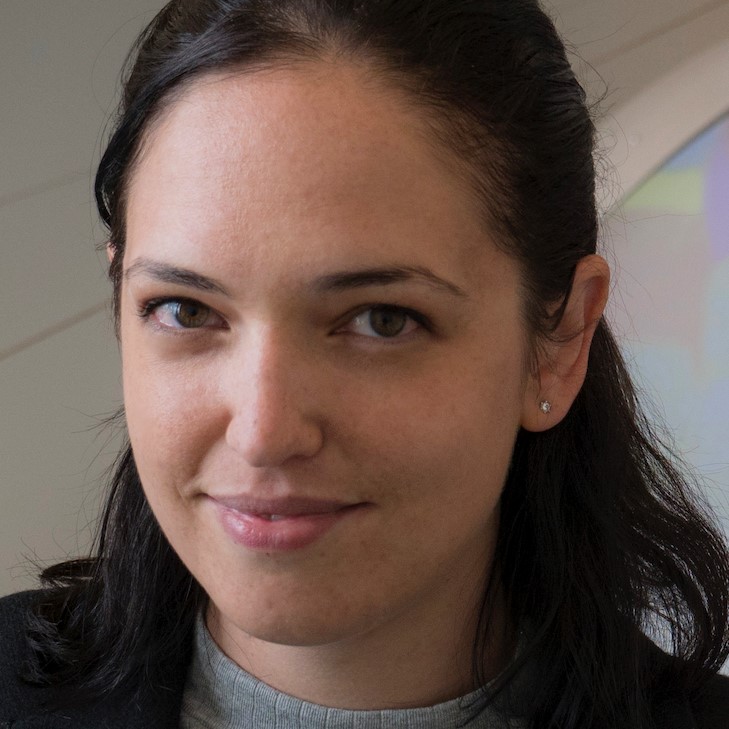 “Our world is full of living creatures that must communicate information to survive and reproduce. A better understanding of how these communication signals are generated and interpreted — an important challenge in ecology — could benefit from physics and mathematics, via application of concepts like energetic cost, compression, and detectability. I propose to work with firefly swarms, which offer a rare avenue into this interdisciplinary endeavor, as their signals are purely visual, approximately digital, and traceable, even in vast congested groups of individuals. Recent advances in field and virtual-reality technologies allow us to probe further than ever before and investigate deep questions about signal-design strategies and their broadcasting and processing. My extensive background in quantitative studies of insect swarms and fluency in both theoretical and experimental approaches places me in a unique position to develop a deeper understanding of animal communication through testable phenomenological theories. As a Cottrell Scholar, I will develop a class titled “Physics, Artificial-Intelligence, and Generative-Art of Agent-Based Models” that will encourage a Feynman-like joy in learning. Building on the materials from the multi-agent systems class I piloted at CU Boulder, I will increase the class’s accessibility via interdisciplinary visual experiences. The visual component will be aligned with my current research on firefly behavior, with content inspired by and connected to the research proposal. As multi-agent systems have long been used to seed generative artwork, the course will build on these aesthetic expressions while teaching the students about the physics and artificial intelligence of multi-agent systems.”
“Our world is full of living creatures that must communicate information to survive and reproduce. A better understanding of how these communication signals are generated and interpreted — an important challenge in ecology — could benefit from physics and mathematics, via application of concepts like energetic cost, compression, and detectability. I propose to work with firefly swarms, which offer a rare avenue into this interdisciplinary endeavor, as their signals are purely visual, approximately digital, and traceable, even in vast congested groups of individuals. Recent advances in field and virtual-reality technologies allow us to probe further than ever before and investigate deep questions about signal-design strategies and their broadcasting and processing. My extensive background in quantitative studies of insect swarms and fluency in both theoretical and experimental approaches places me in a unique position to develop a deeper understanding of animal communication through testable phenomenological theories. As a Cottrell Scholar, I will develop a class titled “Physics, Artificial-Intelligence, and Generative-Art of Agent-Based Models” that will encourage a Feynman-like joy in learning. Building on the materials from the multi-agent systems class I piloted at CU Boulder, I will increase the class’s accessibility via interdisciplinary visual experiences. The visual component will be aligned with my current research on firefly behavior, with content inspired by and connected to the research proposal. As multi-agent systems have long been used to seed generative artwork, the course will build on these aesthetic expressions while teaching the students about the physics and artificial intelligence of multi-agent systems.”
Aurora Pribram-Jones, chemistry, University of California, Merced – Reframing Interaction in Quantum Mechanical Ensembles and Across Chemistry Learning Communities
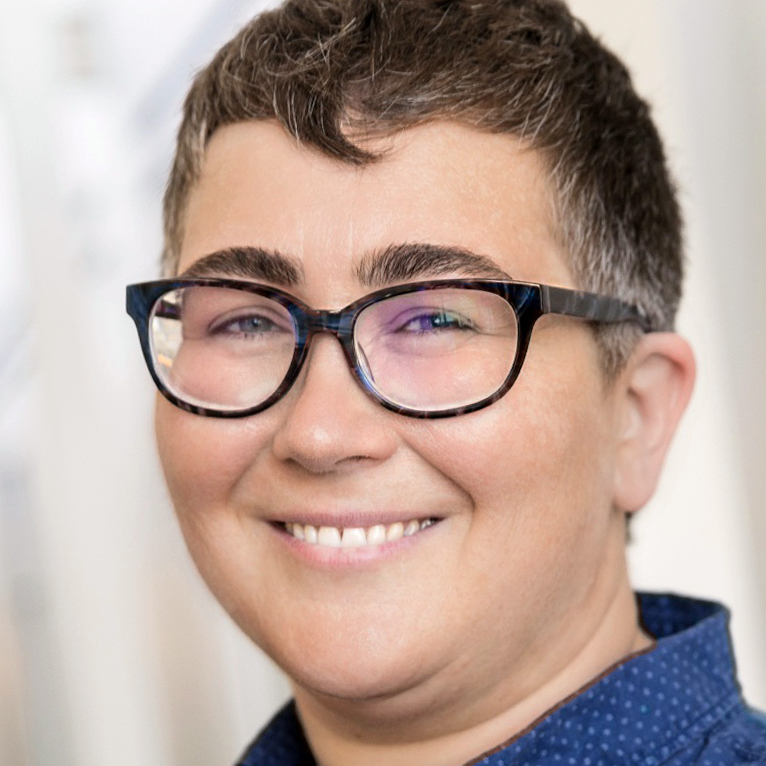 “Density functional theory, one of the most widely used quantum mechanical descriptions of electrons, is known to struggle with accurate simulation of diradicals, transition metal oxides, and other strongly correlated systems. The details of strong correlation among electrons can be even further complicated by thermal effects in high-temperature, high-pressure environments, such as those you find in planetary cores or fusion capsules. These convoluted systems are challenging for our usual approximations, and we find that a non-interacting reference might not be the best starting point for electronic structure methods. My group is using a combination of chemical physics and mathematics to develop new strategies for addressing these strong-interaction effects. This new method not only flips the usual density functional theory setup on its head by referencing infinitely interacting electrons, it also takes into account how increasing electronic temperatures can affect ensembles of strongly interacting electrons as they heat up. To encourage meaningful interaction between student populations and nourish burgeoning scientific identities, I will also implement a program of quantum mechanical, classroom-based research on local water contaminants. These blended computational communities, drawn from our general chemistry, quantum chemistry, and density functional theory classes, will support mathematical skill building, examine learning practices, and span the undergraduate-graduate student divide.”
“Density functional theory, one of the most widely used quantum mechanical descriptions of electrons, is known to struggle with accurate simulation of diradicals, transition metal oxides, and other strongly correlated systems. The details of strong correlation among electrons can be even further complicated by thermal effects in high-temperature, high-pressure environments, such as those you find in planetary cores or fusion capsules. These convoluted systems are challenging for our usual approximations, and we find that a non-interacting reference might not be the best starting point for electronic structure methods. My group is using a combination of chemical physics and mathematics to develop new strategies for addressing these strong-interaction effects. This new method not only flips the usual density functional theory setup on its head by referencing infinitely interacting electrons, it also takes into account how increasing electronic temperatures can affect ensembles of strongly interacting electrons as they heat up. To encourage meaningful interaction between student populations and nourish burgeoning scientific identities, I will also implement a program of quantum mechanical, classroom-based research on local water contaminants. These blended computational communities, drawn from our general chemistry, quantum chemistry, and density functional theory classes, will support mathematical skill building, examine learning practices, and span the undergraduate-graduate student divide.”
Ryan Trainor, astronomy, Franklin & Marshall College – Feedback in the Circumgalactic Medium Probed with Lyman-alpha Emission
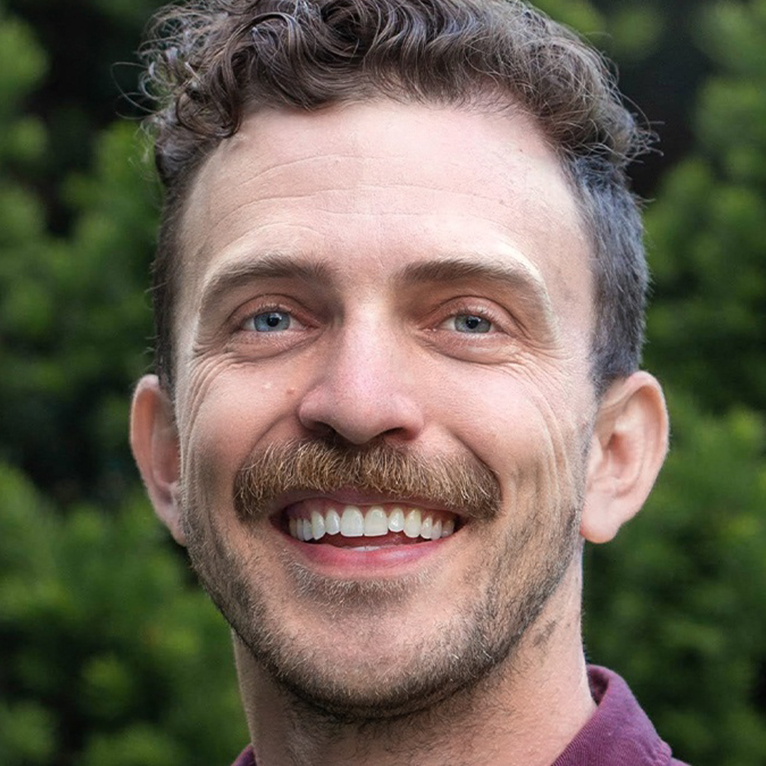 “Galaxy evolution depends on “feedback” — interactions of stars, black holes, and gas that set the tempo of galaxy growth. While these interactions affect star formation within galaxies as well as the large-scale ionization of the Universe, this research program targets the interface between these regions: the gaseous reservoir surrounding galaxies known as the circumgalactic medium, where feedback effects are poorly constrained by current simulations and observations. Hydrogen Lyman-alpha emission is a promising tracer of circumgalactic gas, particularly with the advent of new models to extract density and kinematic information encoded through the scattering of light as it escapes galaxies. This project will directly measure circumgalactic emission in stacks of faint galaxies as well as in individual, luminous exemplar systems. By measuring the structure, ionization, and velocities of this material and comparing these measurements to the properties of stars and black holes inside the galaxies themselves, we will provide new constraints on how diverse processes and components of galaxies regulate their future evolution. The educational project aims to support students who are pushed out of physics and astronomy by affirming their identities as scientists and reforming the learning environments around them. By highlighting ethical reasoning and critical thinking as crucial scientific skills and engaging with sociological research in our science classrooms, we will aim to increase the sense of belonging for minoritized students while also disrupting the harmful stereotypes and behaviors that may be common among peers from overrepresented groups. In addition, a paid fellowship will provide opportunities for students to take on scientific research and teaching responsibilities while contributing to social good in our local community.”
“Galaxy evolution depends on “feedback” — interactions of stars, black holes, and gas that set the tempo of galaxy growth. While these interactions affect star formation within galaxies as well as the large-scale ionization of the Universe, this research program targets the interface between these regions: the gaseous reservoir surrounding galaxies known as the circumgalactic medium, where feedback effects are poorly constrained by current simulations and observations. Hydrogen Lyman-alpha emission is a promising tracer of circumgalactic gas, particularly with the advent of new models to extract density and kinematic information encoded through the scattering of light as it escapes galaxies. This project will directly measure circumgalactic emission in stacks of faint galaxies as well as in individual, luminous exemplar systems. By measuring the structure, ionization, and velocities of this material and comparing these measurements to the properties of stars and black holes inside the galaxies themselves, we will provide new constraints on how diverse processes and components of galaxies regulate their future evolution. The educational project aims to support students who are pushed out of physics and astronomy by affirming their identities as scientists and reforming the learning environments around them. By highlighting ethical reasoning and critical thinking as crucial scientific skills and engaging with sociological research in our science classrooms, we will aim to increase the sense of belonging for minoritized students while also disrupting the harmful stereotypes and behaviors that may be common among peers from overrepresented groups. In addition, a paid fellowship will provide opportunities for students to take on scientific research and teaching responsibilities while contributing to social good in our local community.”
